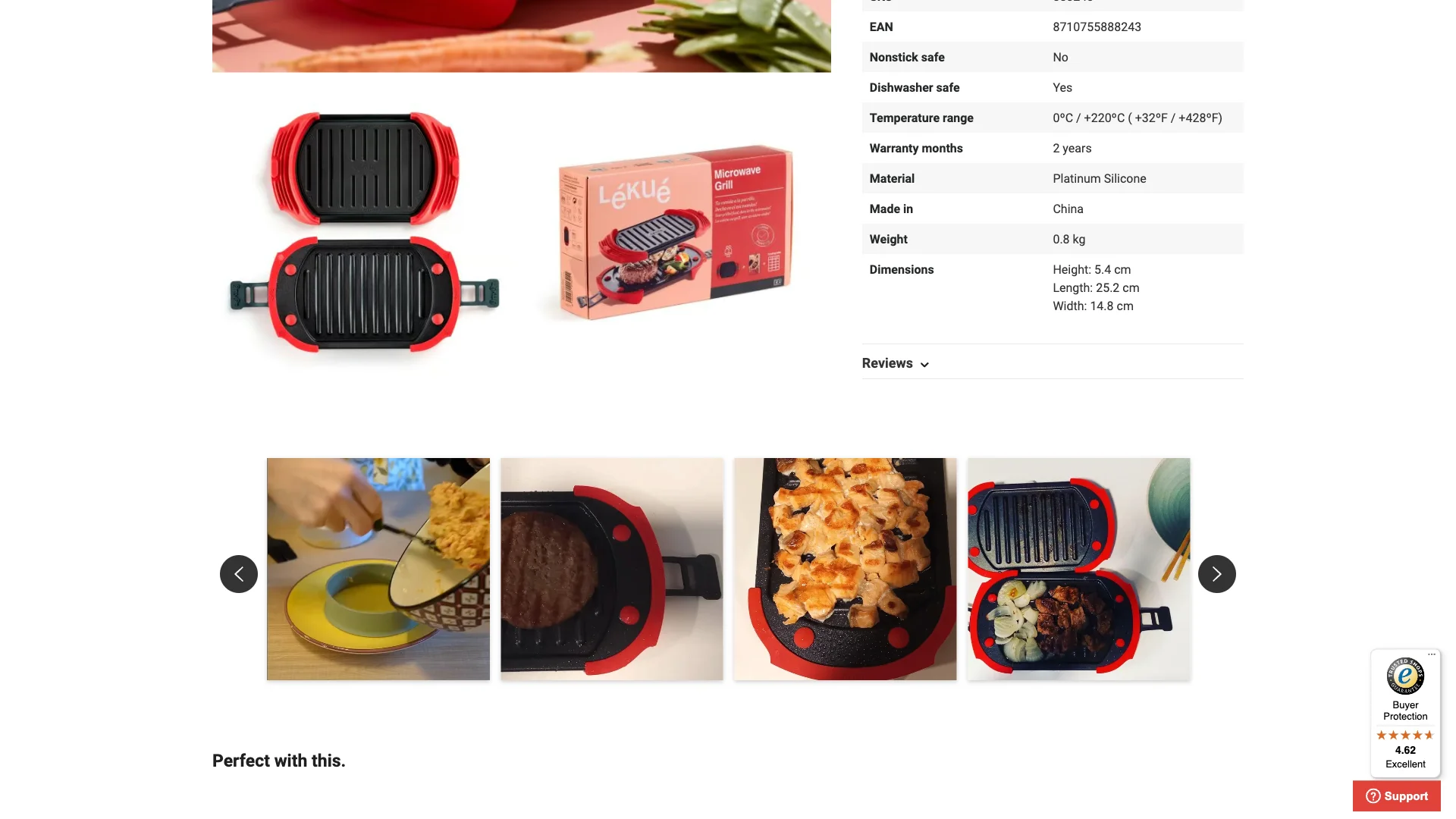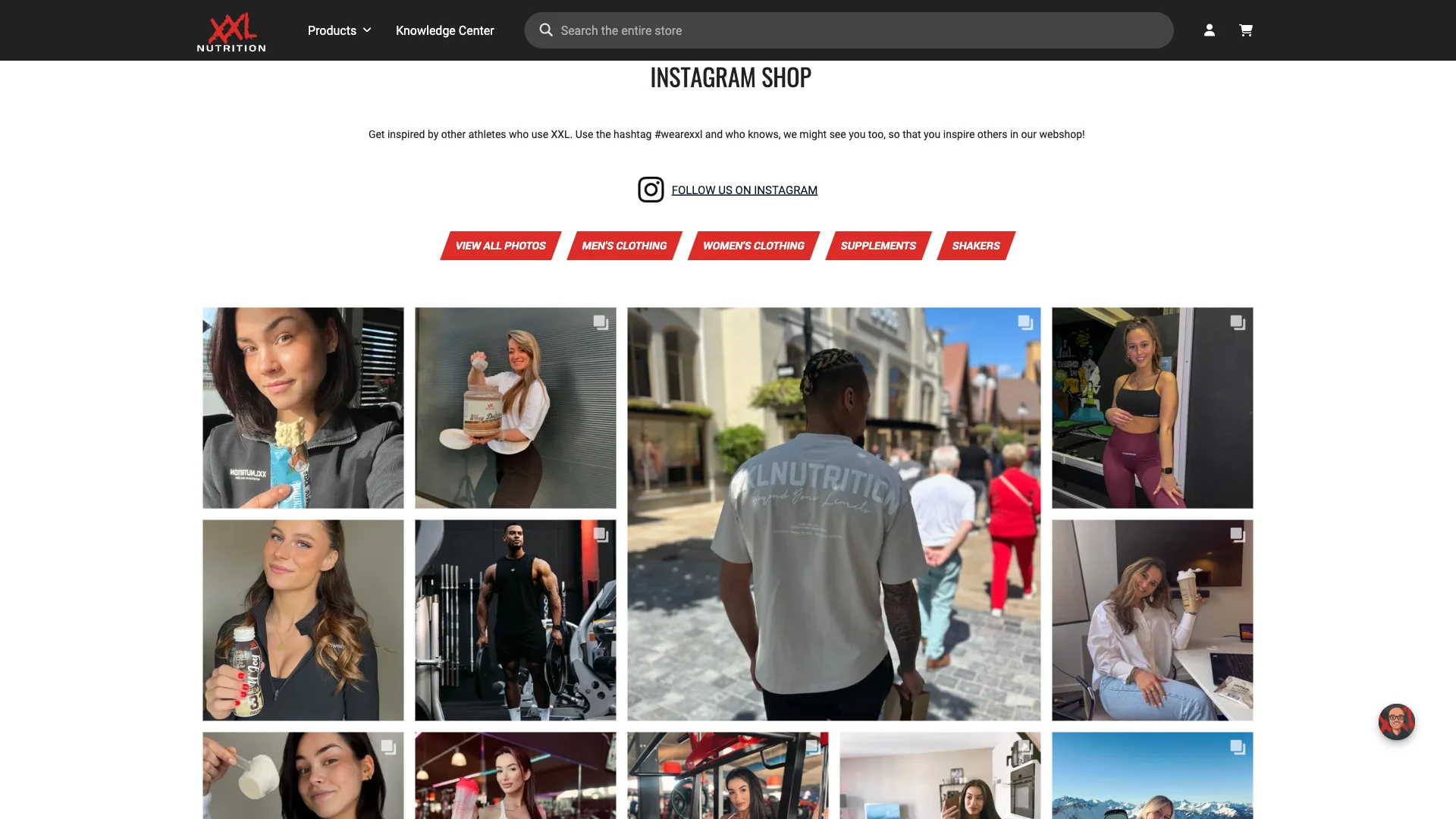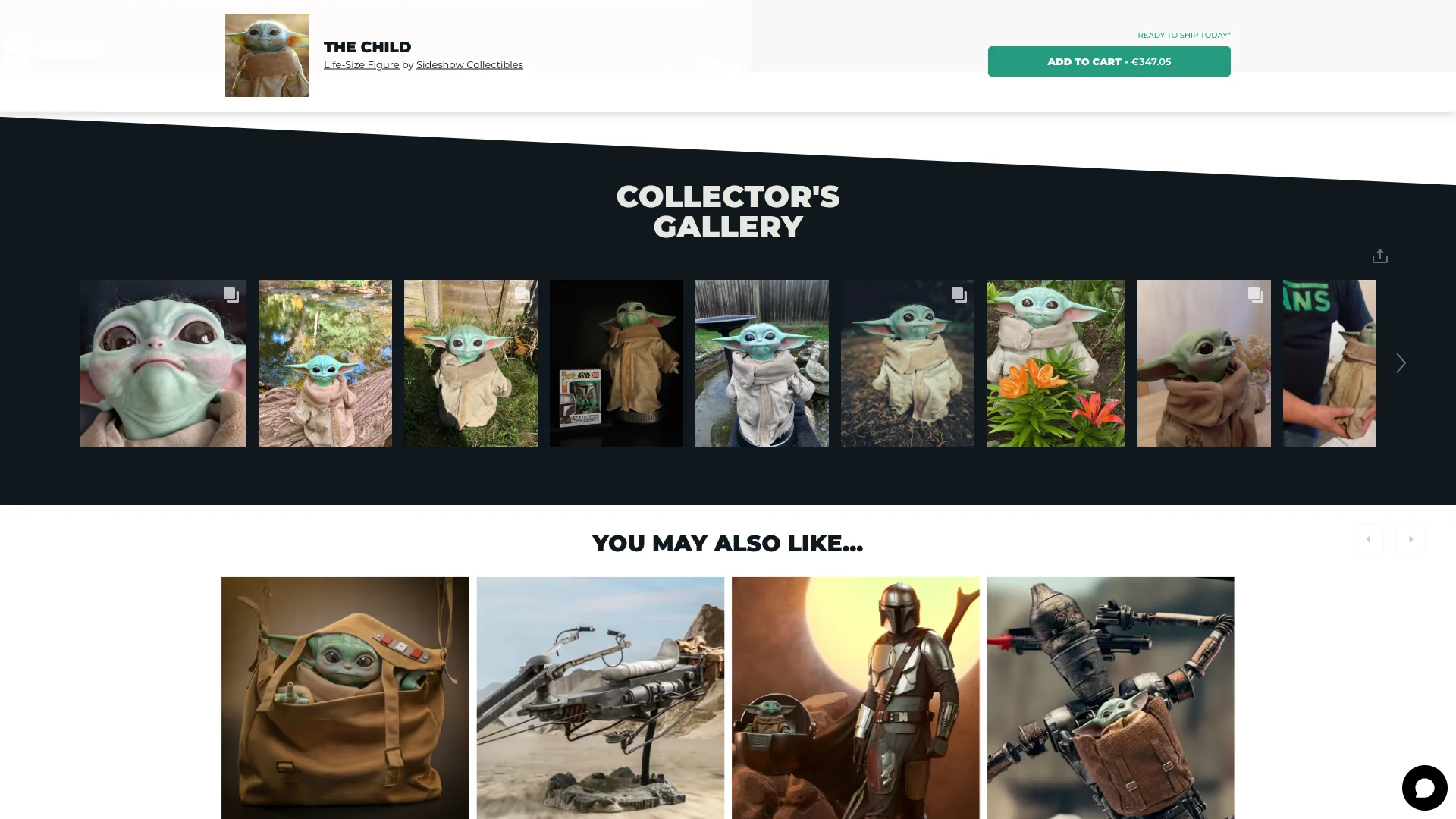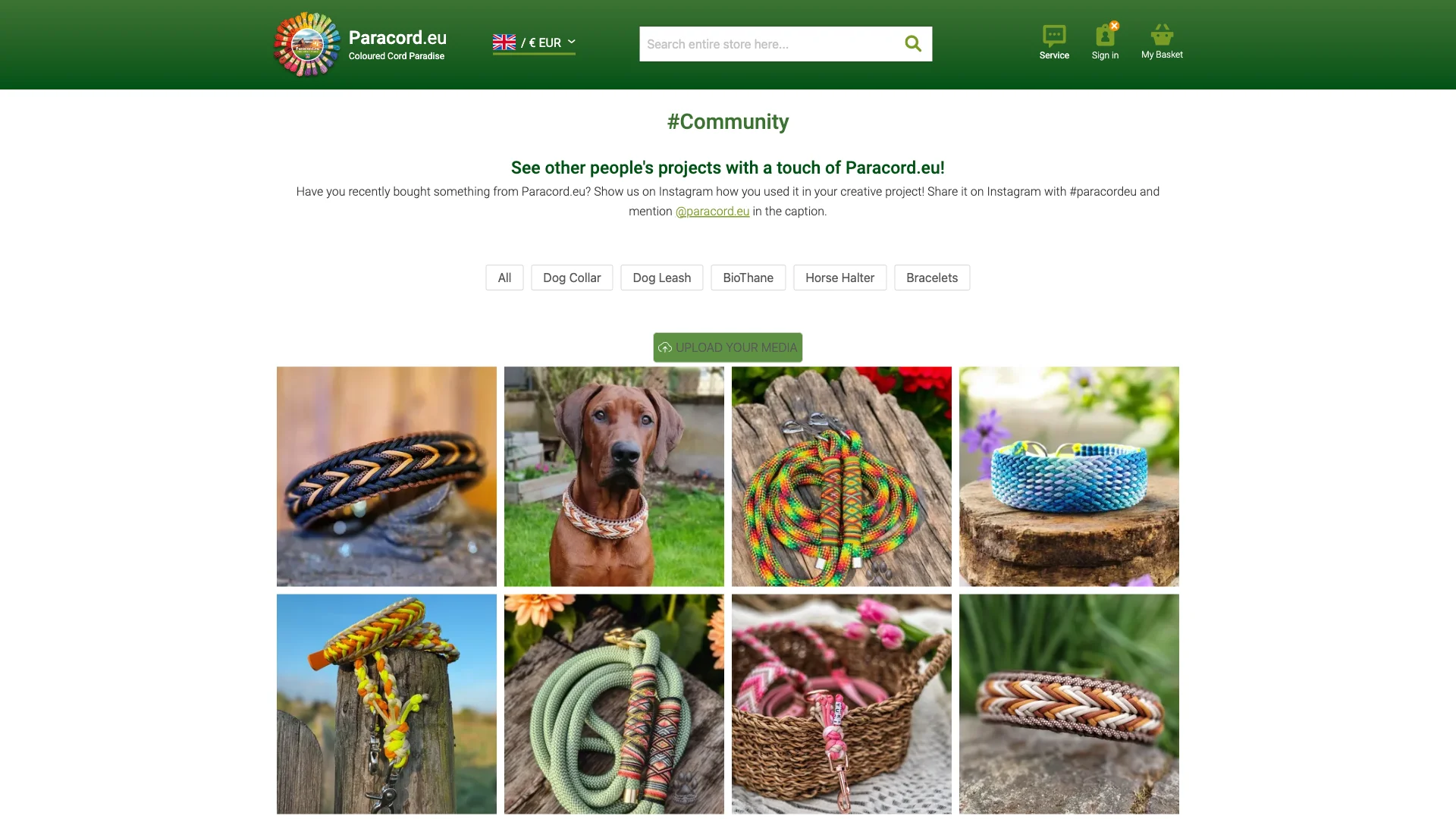Case studies
Industries
Resources
TikTok Collection
NEW
Table of Contents
Consumer Goods brands are tapping into this by embracing user-generated content (UGC) as their main strategy for building genuine connections and trust. UGC is so powerful because people trust other people.
When customers share their honest experiences through reviews, social media posts, or video content, they create something more valuable than any traditional marketing campaign: credibility. This authentic content helps potential buyers see products in real-world contexts, making purchase decisions easier and more confident.
The beauty of user-generated content lies in its ability to transform customers into brand storytellers. Every unboxing video, product review, or lifestyle post becomes part of a larger narrative. One written by the very people who matter most, the customer. For consumer goods brands, this represents an incredible opportunity to showcase their products through the lens of genuine customer experiences.
In this article, we’ll explore how leading consumer goods brands are harnessing the power of UGC to create authentic connections, drive engagement, and thrive in today’s digital marketplace.
User-generated content has become a powerful tool for consumer goods brands, demonstrating remarkable success in building consumer confidence and driving purchase decisions through authentic product experiences. This genuine, customer-created content format offers valuable opportunities to consumer goods brands to showcase products and connect with consumers:
By leveraging UGC, consumer goods brands can develop a more relatable, trustworthy, and engaging marketing approach that connects with modern shoppers while addressing common retail challenges. Let’s check some real Consumer Goods brands’ results with UGC.
For pet retailers like Pets Place, customer endorsements drive purchasing decisions. Their social media strategy encourages pet owners to share authentic moments, creating a vibrant community of animal lovers showcasing their furry friends with Pets Place products.

After implementing Flowbox, Pets Place transformed their digital presence from relying on stock photos to featuring genuine customer content.
This shift proved highly successful – their Instagram following grew from 1,700 to over 5,000 in just 8 months, while brand-related tags surged from 80 to 1,280 monthly. Read the case study on how Pets Place benefits from UGC.
Their innovative approach includes monthly gift card rewards for the best content creators and plans for a “Make Your Pet Famous” campaign. By featuring customer content across their website, physical stores, and marketing channels, they’ve created an engaging ecosystem that celebrates their community.
The strategy has delivered measurable results: A/B testing revealed a 5% revenue increase on their homepage and 7.4% on product pages.
“There is a clear difference with and without UGC. People want to see how our products look in other people’s homes with other animals. People believe other people, and they inspire each other. We see it in the conversions. People share everything online today, I think content marketing will become even more important, going forward.”
Stefan de Koning – Social Media and Content Marketer at Pets Place
This approach to user-generated content has positioned Pets Place ahead of competitors, creating a winning formula of authentic engagement and business growth in the pet retail space.
Lékué is a kitchenware brand dedicated to making healthy, flavourful cooking easy and enjoyable. Their products encourage a vibrant lifestyle, and their community of customers actively shares recipes and cooking ideas using Lékué tools on social media.
While professional food photography highlights product features, customers trust real-life examples more. Lékué strengthens its authenticity by showcasing UGC from home cooks, proving their products deliver on their promise of easy and wholesome cooking.
Lékué leverages this content on their website, primarily their product pages, creating a seamless journey from inspiration to purchase. Learn how Lékué benefit from UGC.

Why it works:
By bridging the gap between social media and eCommerce, Lékué doesn’t just sell kitchenware, instead it fosters a movement toward healthier, happier cooking.
In the sports nutrition sector, social proof significantly influences purchase decisions. When potential customers see real athletes and fitness enthusiasts using XXL Nutrition products in their training routines, it creates authentic connections and builds trust.
While professional product photography has its place, customers know that products look different in real-world gym and training environments.
XXL Nutrition has successfully strengthened their brand authenticity by showcasing their products being used by actual athletes and fitness enthusiasts. Read the case study on how XXL Nutrition benefits from UGC.
“We have a lot of followers on our social media accounts, but we never did anything with it. Now we can use the content made by our customers to our advantage. That’s very powerful.”
Tom Meijer, Online Marketeer at XXL Nutrition
The results speak for themselves: XXL Nutrition have realised a 112.72% increase in average size value uplift, as well as an 87.98% increase in average order value. XXL Nutrition strategically incorporates this content across their digital presence, from their homepage to dedicated community pages.

By featuring real customer photos and testimonials, they provide authentic proof of product effectiveness, helping potential buyers understand how products perform in actual training environments and the lifestyles of real sports and workout enthusiasts.
For retailers like Denby Pottery, customer endorsements drive purchasing decisions. Their innovative approach allows customers to sort through shoppable UGC content based on product colour and style, helping shoppers visualise items in their homes before purchasing.
After implementing Flowbox’s UGC platform, Denby transformed their digital presence by integrating customer content throughout their website.

Their “Shop this look” feature on product detail pages has become one of the most visited areas of their site, according to user insight studies and heat mapping. Read how Denby benefits from UGC.
The strategy focuses on making customer content easily accessible through gallery pages for core product ranges and a dedicated “Denby at Home” section for pure UGC.
“Customers want to see how the products can be used in different ways, and Flowbox provides an easy way for us to embed this content throughout the site.”
Ged Lightfoot – eCommerce Manager at Denby
The results have been significant: UGC integration has opened new revenue channels and improved product launches.
With consumers being 5x more likely to convert through UGC over professional content, Denby’s approach demonstrates how authentic customer content can drive both engagement and business growth in the homeware retail space.
In the world of pop culture collectibles, passion drives purchasing decisions. Sideshow Collectibles taps into the enthusiasm of its global fanbase. They showcase user-generated content from collectors who display their movie-themed statues, action figures, and art prints in personalised setups.
Seeing how fans integrate these pieces into their homes or creative displays helps potential buyers imagine owning a piece of their favourite franchises.

Sideshow integrates UGC across their website and marketing, pairing product listings with photos submitted by fans. This strategy transforms product pages into galleries of inspiration, where buyers see how fellow collectors style their items.
By celebrating fan creativity, Sideshow Collectibles cultivates a community where collectors become storytellers. User-generated content turns purchases into shared experiences, proving that these items aren’t just objects but they tell a story.
Paracord’s cords are designed to be more than utilitarian. They’re a canvas for creativity. By curating UGC from customers who transform their cords into custom gear like survival bracelets, pet leashes, or outdoor gear repair kits, the brand showcases how a single product adapts to limitless needs.

Paracord’s UGC reframes the cord from a simple item to a launchpad for creativity. Seeing a hiker repair a backpack strap mid-trail or a dog owner weave a personalised leash demystifies the product’s potential. Buyers are encouraged to share their own creations too, creating a continuous cycle of content.
The Flowbox UGC Platform has many great tools and capabilities that can help any Consumer Goods brand, no matter how big or small. Here is an overview of the key platform features that can help you automate UGC tasks:
Flowbox’s Collection Tool continuously monitors social channels (Instagram, Facebook, TikTok, YouTube, Pinterest, and more) for brand mentions, tags, and designated hashtags.
Also, the Media Uploader feature enables your customers to upload UGC directly through your website or via a shareable link – no social media needed.
All captured posts flow into a single dashboard, ensuring your team never misses valuable user‑generated content.
The Moderation tool is a suite of AI‑powered moderation capabilities that lets you curate high‑quality, on‑brand UGC at scale:
Create, schedule, and distribute both user‑generated and branded content across multiple social platforms—all from within Flowbox. This unified interface eliminates manual posting, streamlines your social calendar, and preserves the authentic voice of your community.
Collect valuable customer feedback with highly customisable rating and review forms, moderate high volumes of ratings and reviews from within our platform or opt for auto moderation fields that optimise your workflow, then automatically display them directly on your product pages with different configurations to choose from.
With built‑in Google Analytics 4 integration, Flowbox lets you track every UGC interaction—clicks, conversions, engagement paths—alongside your broader marketing metrics. Use these insights to refine gallery placements, content mix, and UGC campaign tactics in a single, data‑driven dashboard.
For consumer goods brands, implementing a UGC strategy has become essential for building authentic connections with their audience. Success stories like XXL Nutrition and Pets Place demonstrate that leveraging customer content can significantly impact both brand perception and purchase decisions.
A well-executed user-generated content strategy serves multiple purposes: it provides social proof, creates authentic brand representation, helps potential customers visualise products in everyday use, and builds a sense of community around the brand.
By incorporating customer photos, reviews, and lifestyle content into their marketing mix, consumer goods brands can create a more trustworthy, cost-effective and relatable shopping experience.
The key to success isn’t just collecting UGC, but strategically and methodically integrating it throughout the customer journey. Across the website and social media, customer content should be woven into the brand’s identity, showcasing authentic experiences that resonate with both existing and potential customers.
Book a demo with Flowbox and we’ll show you how a UGC platform can boost your brand sales.